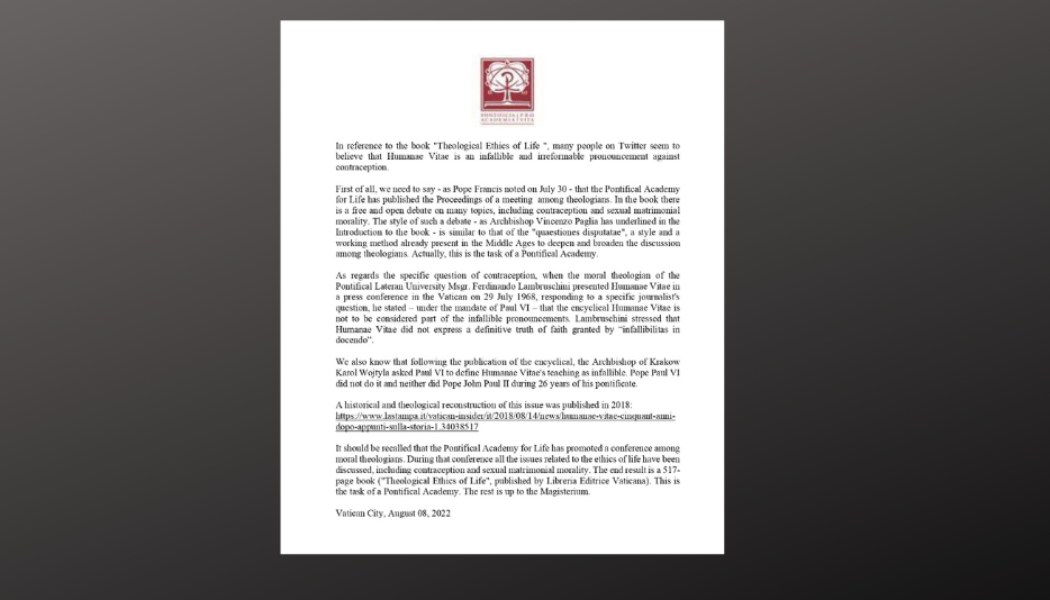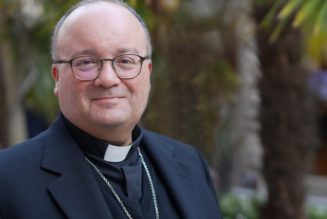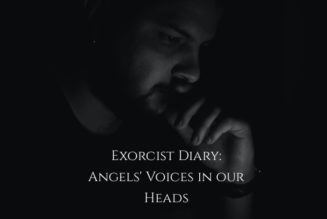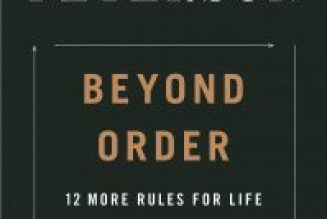An Aug. 8 tweet from the Pontifical Academy for Life (PAV) claimed that Humanae Vitae (HV) did not teach a truth guaranteed by the Church’s infallibility. While we were writing this commentary on it, the tweeted statement (full text here) was deleted without explanation. But the confusion at the heart of the tweet is widespread and will not go away with the tweet. It is this. Although Paul VI chose not to include in HV any formal, ex cathedra and manifestly infallible definition, the perennial teaching against contraception he reaffirmed in the encyclical had long been proclaimed infallibly, by the concurrence of popes, bishops and their priests throughout the world in presenting it, for decades and centuries, as a settled and unchangeable teaching of divine law.

PAV’s tweet referred to what Msgr. Ferdinando Lambruschini, professor of moral theology at a leading pontifical university, said at the press conference introducing the encyclical. No one doubts that he had Paul VI’s permission to say that the Pope “did not wish to issue an irreformable and defining document; the teaching here presented is the ordinary teaching of the Church …” But the tweet’s claim that Msgr. Lambruschini said that “Humanae Vitae did not express a definitive truth of faith [guaranteed] by ‘infallibilitas in docendo’ [infallibility in teaching]” subtly alters what is said in the 2018 article and book to which it links, so as to introduce (or retain) the confusion we have mentioned.

Nowhere in the moral theologian’s lengthy prepared statement as recorded in L’Osservatore Romano and translated in Catholic Mind (September 1968) does he say that the teaching reaffirmed in the encyclical is not infallible. And if his follow-up, impromptu answers to journalists did include anything like that (as alleged, with ambiguity and no quotation, in the PAV-linked 2018 article), it was without Paul VI’s mandate.
For Paul VI certainly held (even if Msgr. Lambruschini conceivably forgot and the tweeting PAV officials certainly were forgetting), that infallibilitas in docendo is found, as both Vatican I and Vatican II affirm, in three distinct forms of teaching. Two of these are called “extraordinary:” formal papal definitions, and formal definitions by papally ratified councils. The third form is “ordinary,” and is not dependent on definitions.
Vatican I’s teaching about the infallibility of “the ordinary and universal magisterium” (Dei Filius c. 3) was rearticulated more fully by Vatican II’s Lumen Gentium (On Divine Revelation) 25: Bishops, even if they are “scattered throughout the world,” provided they maintain communion with each other and the pope, “infallibly proclaim the teaching of Christ” when, “[i] authoritatively teaching [ii] matters of faith and morals, they [iii] agree in one judgment [iv] as that to be held definitively (definitive tenendam).” The final condition is [v] that the relevant matter of faith or morals must pertain to revelation, either by being revealed in a strict sense, or by being needed for the articulation (exponendum) and defense (custodiendum) of what was so revealed.
The Church’s perennial teaching on the immorality of contraception certainly satisfies condition [v] — which pertains to revelation. In the rest of this commentary (part 1), we give some indication how.
Perennial Teaching
The teaching has two distinct but overlapping foundations: that human life be respected in its transmission; and that sex acts always be marital (conjugal). Like Humanae Vitae, we here focus mainly on the second. Sex acts cannot be marital unless they express, actualize and enable the spouses to experience marriage’s two defining elements: its openness to procreation (bonum prolis) and its commitment to spousal unity (bonum fidei). That was tersely articulated by Vatican II in Gaudium et Spes, 51, and there declared to “pertain to divine law” (in lege divina explicanda):
“When there is a question of harmonizing marital love with the responsible transmission of life, the moral aspect of whatever is done … must be determined by objective standards that, based on the nature of the human person and of his or her acts, preserve the full sense [full meaning] of mutual self-giving and human procreation in the context of true love.”
To make clear the demanding character of that moral standard, GS 51 immediately adds: “This [preservation of the full sense …] cannot be achieved unless the virtue of conjugal chastity is sincerely practiced.” And the following sentence states the conclusion: “Relying on these principles, [the faithful] may not undertake methods of birth control that the teaching authority of the Church, unfolding the divine law, finds to be immoral.”
GS 50 had already said that conscience, in considering responsible transmission of human life, must keep “conformity with the divine law,” and with the magisterium’s authoritative interpretation “in the light of the gospel” of that law — a law that displays marital love’s full meaning.
Humanae Vitae was essentially a reaffirming of the Council’s way of transmitting the perennial teaching in GS 50 and 51 (not forgetting GS 47’s denunciation of the profanation of marital love by “illicit practices against generation” — explained to the Council Fathers by the drafting committee as including contraception but excluding periodic abstinence [NFP]).
We should add, because of widespread dust-throwing since December 1965, that the Council subtracted nothing from that teaching when, to the sentence we just quoted from GS 51, it added Footnote 14, citing, at Paul VI’s direction, the condemnations of contraception by Pius XI and Pius XII, and with his consent, his 1964 allocution announcing that “certain questions” were being considered by a papal [birth control] commission. As Jesuit Father John Ford, a member of that papal commission but also a delegate of Paul VI to the Council’s commission drafting GS 47-51, demonstrated in America (April 16, 1966), the “certain questions,” in the mind of the Pope and Council when GS was promulgated in December 1965, concerned not the core perennial teaching against freely chosen contracepted intercourse, but particularly the question whether that teaching applies when the means chosen to prevent conception is the pill (then still a novelty).
Paul VI’s commission soon judged, all but unanimously, that there is no moral difference between a non-abortifacient pill and other ways of contracepting. But then it bolted, and in late June 1966, by substantial majority, confidentially recommended to Paul VI a radically new position: Within a marriage responsibly open as a whole to procreation, contraception can be (and often is) permissible and good. After four months’ intense consultation and reflection, the Pope, addressing Italian obstetricians on Oct. 29, indicated that the matter called for a study deeper, and more logical in its attention to doctrine, than the commission’s. He flatly denied one of the commission majority’s key premises, that the perennial teaching was in a state of doubt.
Decisive Judgments
In July 1968, concluding his deeper, more logical reflection, Paul VI’s encyclical summarized (HV 3) the commission majority’s key recommendation, and judged and declared it to be contrary to the natural and Divine law proclaimed in the Church’s constant and firm teaching.
Just before articulating its decisive judgments, the encyclical (HV 10) cited GS 50 and 51, in a footnote to its preliminary formulation: “… [spouses] are morally bound to make their actions correspond to the design of God the Creator, a design manifested in the very nature of marriage and of marital acts, and set forth in the Church’s constant teaching [footnote: See GS 50-51].”
The decisive judgment is then articulated first in HV 11: Marital acts do not “cease to be legitimate when they are foreseen to be infertile by reason of causes in no way willed by the spouses. … Still, the Church, in reminding people of the requirements of the precepts of natural law, a law interpreted by the Church’s constant teaching, teaches that it is necessary that each marital act [Paul VI’s italics] remain oriented in itself to the procreation of human life [footnote: See Pius XI, encyclical letter Casti Connubii: AAS 22 (1930), 560; Pius XII, Address to Midwives: AAS 43 (1951), 843].”
The next sentence, HV 12, repeats GS 51’s teaching about preserving the two meanings of marital intercourse: “This doctrine, often expounded by the Church’s magisterium, is based on the indissoluble connection — established by God and not rightly severable by human volition — between the two inherent meanings of marital intercourse: unitive and procreative.”
HV 11’s very summary words “oriented in itself [per se destinatus]” were then clarified in HV 14, where one finds the encyclical’s most formal and weighty formulations:
“On the basis, therefore, of these primary principles of the human and Christian doctrine of marriage, I must again declare that … to be totally rejected as a legitimate way of regulating the number of children. … is any act which — when marital intercourse is anticipated, being engaged in, or leading to its natural consequences — is intended (either as end or as means) to impede procreation. [footnote: See Council of Trent Roman Catechism [1566], Part II, Chapter 8; Pius XI, encyc. letter Casti Connubii: AAS 22 (1930), 559-561; Pius XII, Address to Midwives: AAS 43 (1951), 843; to the Society of Hematology: AAS 50 (1958), 734-735; John XXIII, encyclical letter Mater et Magistra: AAS 53 (1961), 447.]”
We quote these formulations and footnotes as showing Humanae Vitae handing on a judgment, a teaching, that Catholic bishops throughout the world had for centuries treated as to be held definitively (definitive tenendam) by their faithful. They had done so primarily by requiring their priests, as preachers and confessors, to communicate it as a teaching that any freely chosen act of contracepted intercourse is excluded from the Christian’s Way — with its hope for a share in the Kingdom — just as surely as any choice to engage in pre-marital intercourse, masturbation or sodomy.
That judgment, as bishops and their confessors always taught, concerned divide law; and the judgment was shared by almost all Christian bodies right down to the 20th century. When the Episcopalian/Anglican bishops collectively defected from it in 1930, Pius XI — in the passage cited by GS 51 and HV 14 — emphasized the teaching’s certainty in the most emphatic terms as identifying divine and natural requirements not made by the Church but “handed down uninterruptedly from the very beginning.”
Divine and Natural Law
Pius XII, again as cited by the Council and encyclical, taught that what had been solemnly taught in 1930 (and would be reaffirmed in HV 4, 11 and 14) is a precept “as valid today as it was yesterday, and it will be so tomorrow and always, for it is … a precept of law that is natural and divine.”
To help show how the teaching belongs to divine Revelation, Pius XI had quoted St. Augustine’s thought that the teaching’s support included the divine punishment of Onan. But Paul VI did without such contested and redundant appeals to scriptural incidents. He relied instead, like GS 51, on what is at least implicit in Christ’s teaching and certainly is needed to expound and defend/explain the core Christian teaching that sex must be marital.
And rightly relied. For since marriage, as insistently delineated by Christ and then by his apostles, is a lifelong action of spouses who have freely chosen a procreative “one-body” friendship “until death,” the one-body union (sexual intercourse) of that man with that woman enables them to express, actualize and experience their marriage. But it can never do so when either of them is having — or even willing to have — sex alone, or outside their marriage, or in a way that is non-marital because it coerces the other, or fantasizes sex with another person or creature, or intends to impede any procreativity it (this particular act of intercourse) is feared to have. Indeed, the marital meaning of their intercourse is substantially impaired if either of them has not sincerely repented of any non-marital choices of any of these kinds. For such a person’s intercourse with his or her spouse is more or less disabled by such unrepented choices from expressing, actualizing and experiencing his or her marriage.
The corresponding denunciations by Christ of adultery, lustful looks, sexual license — of all porneia (non-marital intercourse) and all aselgeia (any kind of perverted or shameless kind of sex act: Mark 7: 21-22) — are precepts and condemnations that were neither changed nor widened by his apostles, who rather articulated them with sometimes greater specificity and explicitness as implications of the divine law he articulated. Paul in Romans 1-2 makes explicit that divine precepts like these are — each of them! — knowable both by revelation (as in the Decalogue) and by natural reason (natural law), that is, by a truthful judgment of conscience, even a conscience formed without access to revelation.
So the encyclical Humanae Vitae reports (HV 4) that it resulted from “a deeper reflection upon the foundations (principia) of the moral doctrine of marriage, a doctrine founded on natural law illuminated and enriched by divine Revelation.” It restated the Church’s perennial teaching against contraception in a unified and clarified way, making plain its application to the new method of contracepting, a method adopted, as HV 14 puts it, in order to impede conception “when marital intercourse is anticipated” — the pill.
And there is evidence now available that supports a high-confidence judgment that Paul VI, when deciding not to include in his encyclical an exercise of the extraordinary papal magisterium of defining ex cathedra, had in view the infallibility of the ordinary magisterium in handing on, for centuries, the teaching he was restating. In the second part of this commentary, we outline that evidence.
Editor’s Note: The second part of this commentary can be read here.
Join Our Telegram Group : Salvation & Prosperity









